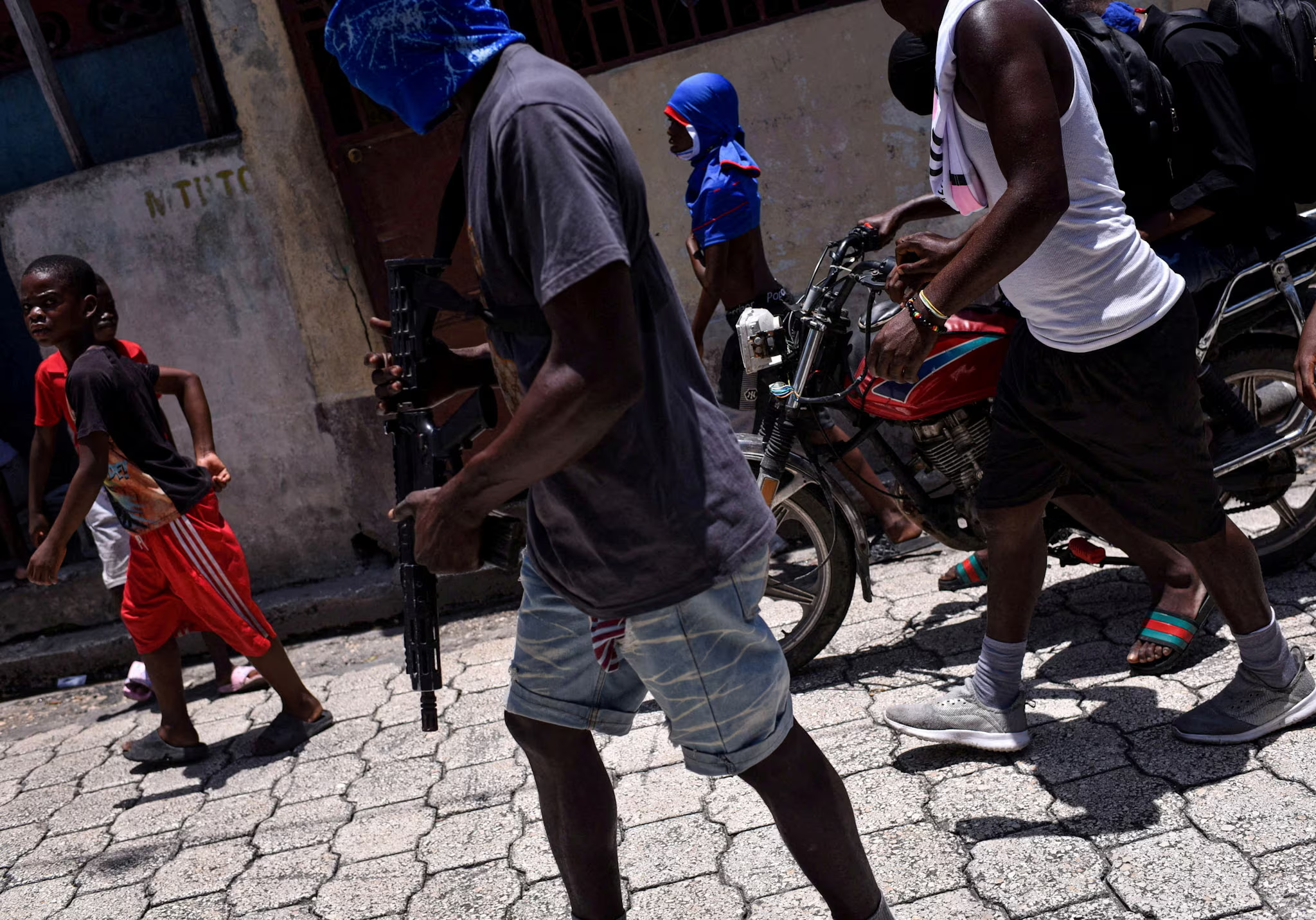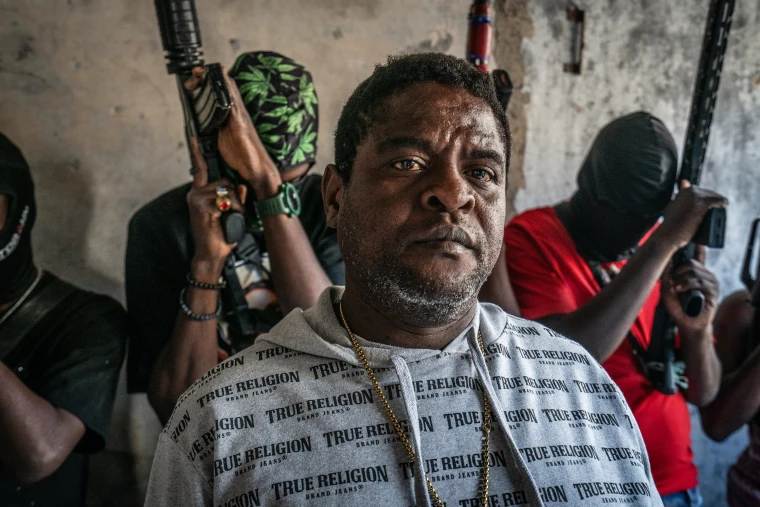In recent months, disturbing reports have emerged from Haiti, revealing a grave and worsening crisis: the recruitment of children into armed gangs. According to a recent United Nations report, Haitian children as young as 10 years old are being forcibly recruited and coerced into violent criminal organizations that have taken control of large portions of the country. This alarming trend has left many families in fear, as their children are at risk of being drawn into gang violence or subjected to horrific exploitation. The situation has reached a critical point, with the lives of thousands of Haitian children being severely impacted by the country’s ongoing political and social turmoil.
The UN’s findings bring to light the profound challenges Haiti is facing, highlighting how the country’s instability, poverty, and lack of effective governance have created a perfect storm for gang violence to thrive. Children, often the most vulnerable members of society, are now being targeted by criminal organizations that use intimidation, violence, and manipulation to recruit young people into their ranks.
This article explores the alarming rise of child recruitment into gangs in Haiti, the factors contributing to the crisis, and the potential solutions to address this devastating issue.
The Scope of the Problem: Children in Armed Gangs
The UN report, which covers data from the past year, paints a grim picture of the situation in Haiti. It states that hundreds of children, including boys and girls, have been forcibly recruited or otherwise drawn into the ranks of armed gangs operating in the country. These gangs have grown in power and influence as the Haitian government has struggled to maintain control over large parts of the nation, particularly in urban centers like Port-au-Prince, the capital.
Children are being recruited in various ways. In some cases, gangs use violence and threats to force children into service, while in others, children are lured by promises of food, money, or protection. For many children, joining a gang may seem like the only option for survival in the face of extreme poverty, the lack of education, and a society plagued by lawlessness.
The roles that children play in these gangs vary. Some serve as foot soldiers, carrying out violent acts or guarding gang territories. Others are used to transport weapons or drugs, while many girls are subjected to sexual exploitation and trafficking. These children are often indoctrinated into the gangs through a mixture of fear and manipulation, learning to carry out heinous acts under the threat of violence against themselves or their families.
The UN has highlighted the increasing use of children in gang conflicts, particularly as the violence between rival gangs intensifies. As children become more deeply embedded in the violence, they lose their childhoods and are exposed to the horrors of war and criminality at an age when they should be in school and protected by the community.
Factors Contributing to the Crisis
The crisis of child recruitment into gangs in Haiti is driven by a combination of factors, many of which stem from years of political instability, poverty, and a weak state. Understanding these underlying causes is key to addressing the issue and providing solutions to protect Haitian children.
- Political Instability and Weak Government
Haiti has been plagued by political instability for decades. Since the fall of its last democratically elected president in 2021, the country has experienced a breakdown in governance, with no clear leadership or direction. The government’s inability to provide basic services, enforce laws, or protect citizens has created a vacuum that armed gangs have filled. The presence of gangs has increased in areas once controlled by the state, with gangs effectively taking over entire neighborhoods. This lack of state control makes it difficult to protect vulnerable populations, including children.
- Economic Hardship and Lack of Opportunity
Haiti remains one of the poorest countries in the Western Hemisphere, with widespread unemployment, high poverty rates, and limited access to education. For many children and their families, joining a gang may seem like the only way to escape poverty or hunger. The gangs offer promises of food, shelter, and even a sense of community that many children do not find elsewhere. In a society where opportunities for education and employment are limited, gang life can appear to be a way out, albeit one that comes with terrible consequences.
- Gang Influence and Expansion
Gangs in Haiti are not just criminal groups; they have become major players in the country’s economy. They control territories where they engage in illicit activities such as drug trafficking, extortion, kidnapping for ransom, and smuggling. These gangs have access to resources and power, allowing them to recruit children, intimidate families, and challenge the government’s authority. They often use extreme violence to solidify their dominance, and children are the easiest target for their recruitment efforts.
- Lack of Protection for Vulnerable Children
In many parts of Haiti, children have little to no protection from armed groups. Schools are often closed due to violence or lack of resources, leaving children idle and susceptible to gang recruitment. Community structures that traditionally protected children, such as local leaders or religious institutions, have been weakened by the country’s collapse into chaos. Additionally, many children are orphaned or separated from their families due to violence or poverty, making them even more vulnerable to exploitation.
The Consequences of Gang Recruitment on Children
The impact of gang recruitment on Haitian children is both immediate and long-lasting. Children who are drawn into gangs face severe physical, psychological, and emotional trauma. Many children who are forced to join gangs are subjected to brutal training, physical abuse, and exposure to violence. They may be forced to participate in shootings, kidnappings, and other violent acts, all while developing a deep sense of fear and distrust of society.
Furthermore, children in gangs often lose access to education, which is a critical path to breaking the cycle of poverty. The trauma they experience can lead to long-term mental health issues, such as post-traumatic stress disorder (PTSD), depression, and anxiety. These children also become disconnected from their communities and families, reinforcing the cycle of violence and poverty that plagues Haiti.
Girls, in particular, face a heightened risk of sexual violence and exploitation. Many are trafficked and sold into sexual slavery or forced into relationships with gang leaders. The exploitation of girls has been documented extensively, with many young girls subjected to rape, forced marriages, and servitude as part of their roles within gangs.
What Can Be Done?
The situation in Haiti is dire, but there are steps that can be taken to protect children and begin to address the underlying causes of gang recruitment. International organizations, including the UN, humanitarian groups, and NGOs, have called for a comprehensive response to this crisis.
- Strengthening Security and Governance
The Haitian government, with the support of international partners, needs to reassert control over gang-dominated areas. This requires both military and police interventions, along with significant reform to address corruption and strengthen the rule of law. Building a functioning government that can provide security, education, and healthcare is critical to breaking the cycle of gang violence.
- Providing Education and Economic Opportunities
One of the most effective ways to prevent children from joining gangs is to provide them with alternatives. This includes expanding access to education, vocational training, and employment opportunities. By giving young people a sense of purpose and a path to a better future, they are less likely to fall prey to gang recruitment.
- Supporting Vulnerable Families and Communities
Assisting families with basic needs, such as food, shelter, and medical care, can reduce the vulnerability of children. Community-based programs that offer social support and safe spaces for children are crucial in helping to prevent recruitment into gangs.
Conclusion
The recruitment of Haitian children into armed gangs is a tragedy that underscores the ongoing crisis in Haiti. The situation requires urgent attention and coordinated efforts to ensure that vulnerable children are protected and given the opportunity for a better future. By addressing the root causes of poverty, instability, and gang violence, Haiti can begin to rebuild and offer hope to its youngest citizens. Until then, the international community must continue to support Haiti’s efforts to protect its children from the scourge of gang violence.




